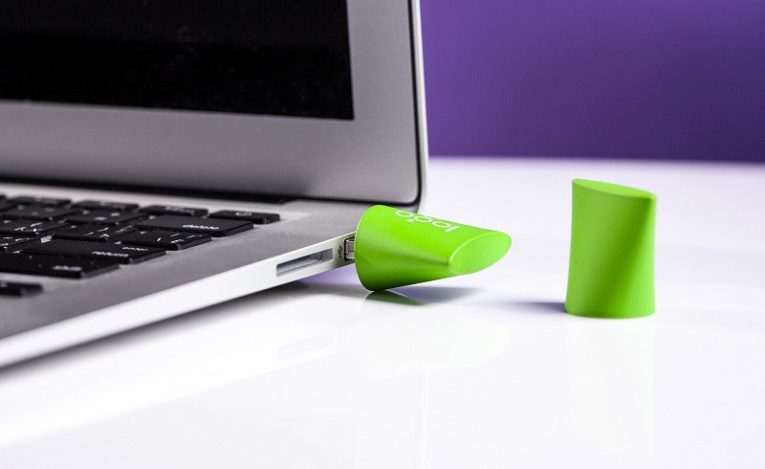What You Should Do to Protect Your Privacy Before Ditching Your Old Flash Drive

The flash memory market revenues worldwide have increased notably in 2017, according to the data gathered by Statista.com. Also, it is estimated the revenues should increase even more and reach a sum of 56.76 billion of US dollars in 2018. In other words, it looks like users are buying more and more flash drives. The reasons for changing previously used storages can vary, for example, some users may need more space or want to have a more robust device. The question is where do old flash drives go when we decide to replace them with new ones? Some users choose to throw them away, while others look for people they could donate or sell the storage devices they no longer want. This is where a need to protect flash drive's privacy arises. As you might already know, merely deleting the files is no good because they can still be easily restored with various data recovery tools. Consequently, in this blog post, we will talk about data format and encryption and how one could employ and combine these methods to wipe sensitive files from their flash drives. Thus, if you want to know how to protect privacy when the time comes to replace your old flash drive, we invite you to take a look at the suggestions presented in this blog post.
How to format your device to protect privacy?
There are flash drives already equipped with special tools allowing the user to permanently erase the files stored on them when there is such a need. Unfortunately, not all devices come with such tools, in which case the user has to know a couple of tricks if he wants to protect his privacy. The next step after deleting files from the flash drive is to format the disk. Both Mac and Windows users can format flash drives without having to purchase any additional software. However, it is vital to understand even after completing this process more advanced users could still recover the contents once held on the device. Meaning, this option can help in situations you want to get rid of less critical files, but when it comes to documents related to your business, clients, and so on, it may not be enough to make sure people with malicious intentions will be unable to get their hands on your sensitive data. No doubt, protecting privacy is vital; otherwise, it could be misused to scam someone or steal one's identity.
How to protect flash drive's privacy by encrypting the disk?
The second method that could help users protect flash drives' privacy is encryption. During this process the encrypted data becomes unrecognizable, for example, all words on an encrypted text might have additional letters or other characters making it impossible to read or understand them. The process is reversible only with a unique decryption key, so encrypted files become unusable to anyone who does not have the right key or password. One of the most secure encryption algorithms once used for military purposes and now employed by advanced software too is called Advanced Encryption Standard or AES in short. For instance, it can be used by Windows users as they can encrypt separate files or entire data on flash drives with BitLocker; a built-in tool available for almost all Windows versions.
Finally, to answer the question on how to protect privacy and delete all sensitive data from your old flash drive, computer security specialists say the user should erase all files normally and then combine the two described methods. To be more precise, the safest choice is to both format and encrypt the disk. In fact, the user should encrypt it and format their flash drives twice if they want to make sure no one can recover the files that were deleted earlier. No need to worry if you have no idea how to do this as the instructions displayed below will explain how to format and encrypt devices separately for Mac and Windows so you could protect privacy when you decide to ditch your old flash drive.
Format flash drives on Windows
- Attach the device you wish to format.
- Press Windows Key+E.
- Find the device you wish to format under Devices and Drives.
- Right-click the chosen flash drive.
- Select Format and press Start.
- Click OK to confirm and wait till the process is finished.
Encrypt flash drives on Windows
- Windows 10 home edition does not provide a tool to encrypt flash drives, so you may have to obtain an application with such function yourself, for example, VeraCrypt (an open-source program).
- Users who have other Windows versions can use a tool called BitLocker; for detailed instructions have a look at our previous blog post.
Format flash drives on Mac
- Connect the chosen storage device.
- Go to Applications and choose Utilities.
- Pick Disk Utility and locate the flash drive.
- Select it and choose the Erase option located between First Aid and Partition.
- Next to Format open the contextual menu and pick Mac OS Extended (Journaled).
- Insert a name you prefer.
- Click the Erase button located below.
- Then press Erase to confirm and wait for the disk to format.
Encrypt flash drives on Mac
- Launch Disk Utility and select the flash drive you wish to encrypt.
- Choose the Erase option (available between First Aid and Partition).
- Open the contextual menu available next to Format.
- Choose Mac OS Extended (Journaled, Encrypted).
- Click the Erase button provided below.
- The pop-up displayed afterward should require to enter a password (if you want to be able to access the data the password should be something you would remember; if not it may not matter what you enter).
- Press Erase to confirm and wait till the system encrypts your device.








